It looks like you're using an Ad Blocker.
Please white-list or disable AboveTopSecret.com in your ad-blocking tool.
Thank you.
Some features of ATS will be disabled while you continue to use an ad-blocker.
share:
The Tell from the road up from Qaramel
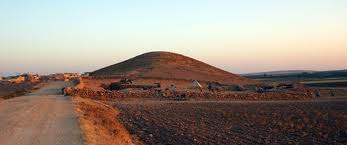
An aerial view, the excavation can be see as a long rectangle running up the slope

In the trench at Qaramel

At work from the site
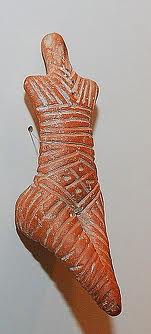
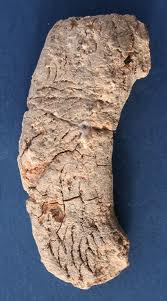

Tell Qaramel is two thousand years older than Jericho and is known as the 'place with five towers' . The tell has been occupied since man began to settle into villages.
Discussion and photos of the towers
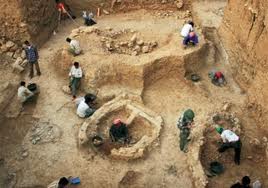
Collection of tools from the site
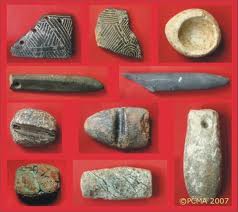
The site is best known for the remains of its towers which were built before domestication of animals and plants.
The first report on the site with photos of the site
Study of human remains found at TQ
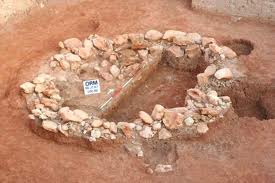
Study
Last report from the site
A representation of what the settlement might have looked like in its earliest stages
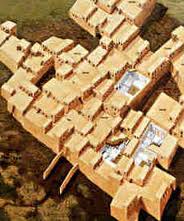
One last media report by the Polish press
Press
A view of another Qaramel

Due to the revolution against the Assad regime
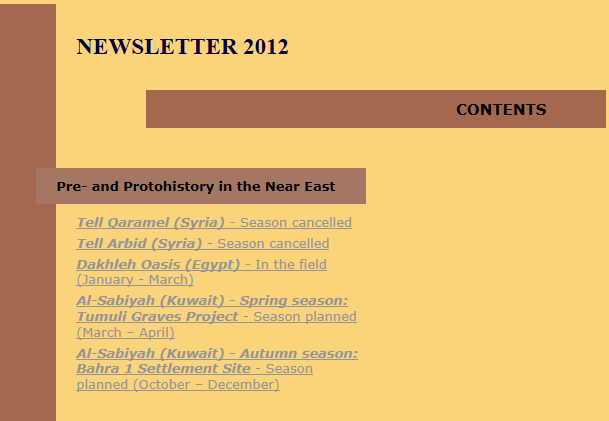

An aerial view, the excavation can be see as a long rectangle running up the slope

In the trench at Qaramel

At work from the site



Tell Qaramel is two thousand years older than Jericho and is known as the 'place with five towers' . The tell has been occupied since man began to settle into villages.
Before the excavations began, it was assumed that permanent sedentary settlements would occur only in combination with the first farming of cereals, and the first domestication and keeping of animals such as sheep and goats, marking the start of the Neolithic period, part of a transition between the proto-Neolithic and Pre-Pottery Neolithic A cultures
Discussion and photos of the towers

Collection of tools from the site

The site is best known for the remains of its towers which were built before domestication of animals and plants.
The first report on the site with photos of the site
Study of human remains found at TQ

Study
Last report from the site
A representation of what the settlement might have looked like in its earliest stages

One last media report by the Polish press
Press
In the last season, the archaeologists examined the fourth tower – and discovered a fifth one. The diameters of both are over 6 metres, and their walls are 1.5 metres thick. “In the central parts of both towers with circular bases, and with walls partly set into the ground, there are huge hearths. We also found trapezium-shaped stone benches, which lead the dwellers of the settlement to the hearth from the north-western side, as well as from the south side – two parallel rows of vertically placed large stones, which formed the passage to the hearth for a person authorised to light and keep the fire” – Prof. Mazurowski explained
“Before, it was assumed that the Neolithic culture spread from southern Levant, among others from Jericho. Now, it turns out that there was an equally ancient culture in the north, represented in Tell Qaramel. A series of elements of this culture are even older than those found in Palestine. Thus, in the Near East, the culture of the Old World has a more polycentric origin. The research in Tell Qaramel permits us to amend many deeply rooted beliefs about the Near East region and the transfer of this cultural model to Europe” – he added
A view of another Qaramel

Due to the revolution against the Assad regime

edit on 8/3/12 by Hanslune because: (no reason given)
A view of another Qaramel
You're just seeing if we're paying attention.
Now, what were you talking about?
LOL Phage, I noticed that one too, much better looking imho
Nice dig, like the pics. Now for some coffee.
Nice dig, like the pics. Now for some coffee.
reply to post by Phage
A bit of humour from the pictures of dry artifacts and old bones! Her name is also the same as the site, Qaramel
A bit of humour from the pictures of dry artifacts and old bones! Her name is also the same as the site, Qaramel
edit on 8/3/12 by Hanslune
because: (no reason given)
reply to post by Hanslune
I'm having a hard time understanding the towers. From the article you linked it seems that they have circular bases about 5 meters in diameter, with walls of 0.5 meters thickness. I don't see how such a structure could have been built 6 meters high.
I'm having a hard time understanding the towers. From the article you linked it seems that they have circular bases about 5 meters in diameter, with walls of 0.5 meters thickness. I don't see how such a structure could have been built 6 meters high.
reply to post by Phage
Sorry about that I got this quote mixed up , it is six meters for the diameters, thanks for noting that, corrected above
Sorry about that I got this quote mixed up , it is six meters for the diameters, thanks for noting that, corrected above
In the last season, the archaeologists examined the fourth tower – and discovered a fifth one. The diameters of both are over 6 metres, and their walls are 1.5 metres thick. “In the central parts of both towers with circular bases, and with walls partly set into the ground, there are huge hearths. We also found trapezium-shaped stone benches, which lead the dwellers of the settlement to the hearth from the north-western side, as well as from the south side – two parallel rows of vertically placed large stones, which formed the passage to the hearth for a person authorised to light and keep the fire” – Prof. Mazurowski explained
reply to post by 35Foxtrot
Well, we do try to concentrate on the science, instead of the prurience interest of the unseemly
Well, we do try to concentrate on the science, instead of the prurience interest of the unseemly
reply to post by 35Foxtrot
Are you sure that last one is an artifact? Not the girl, the one that looks like the eyes were drilled and the rest was scratched in with a nail. I can't believe that is a real artifact. The other carved object have some interest, unless we have a kindergarten drawing that a zealous mother preserved on her ancient refrigerator.
Are you sure that last one is an artifact? Not the girl, the one that looks like the eyes were drilled and the rest was scratched in with a nail. I can't believe that is a real artifact. The other carved object have some interest, unless we have a kindergarten drawing that a zealous mother preserved on her ancient refrigerator.
reply to post by zachi
That might have been how it was created, it was found in the excavation but little is known about it AFAIK
That might have been how it was created, it was found in the excavation but little is known about it AFAIK
My biggest question about this clearly very interesting site is why did they need 5 towers? That would suggest a pretty serious threat (from what we
know about human settlements / civilizations of the time).
What was that threat? Marauding big animals? (sabre tooths, mammoths, etc) or other bands of people? Or is there absolutely no indication as of yet?
What was that threat? Marauding big animals? (sabre tooths, mammoths, etc) or other bands of people? Or is there absolutely no indication as of yet?
reply to post by Flavian
Probably family identity, like San Gimignano, protection against enemies or against vermin - protecting that grain they had learned to gather.
Probably family identity, like San Gimignano, protection against enemies or against vermin - protecting that grain they had learned to gather.
reply to post by Hanslune
It certainly seems to be a treasure trove of an area. Hopefully, there will be a find soon that sheds further light on the transition to city / town living.
It definitely seems to be where early human brains were focused!
It certainly seems to be a treasure trove of an area. Hopefully, there will be a find soon that sheds further light on the transition to city / town living.
It definitely seems to be where early human brains were focused!
reply to post by Flavian
Yeah it was an important area, however once its safe to do digs in Iraq again the focus may shift to the south east
Yeah it was an important area, however once its safe to do digs in Iraq again the focus may shift to the south east
reply to post by Hanslune
Just out of interest, do you have any idea how they determine possible sites in places like Iraq? My thinking being that early settlements were always situated close to water and there is plenty of evidence for the water courses of Iraq undergoing wide ranging changes over the last few thousands years. Therefore where towns / cities were located could be way off the areas typically searched.
I may be very wrong with that assumption and if so, please point me in the right direction! (debunking aids knowledge ).
Just out of interest, do you have any idea how they determine possible sites in places like Iraq? My thinking being that early settlements were always situated close to water and there is plenty of evidence for the water courses of Iraq undergoing wide ranging changes over the last few thousands years. Therefore where towns / cities were located could be way off the areas typically searched.
I may be very wrong with that assumption and if so, please point me in the right direction! (debunking aids knowledge ).
reply to post by Flavian
In that type of terrain
Mounds, thousands of tells all over the place
Surface finds of pottery sherds
Looking for ancient canals, wells and other water sites - people usually set up within half a kilometer of fresh water, exceptions for defensive positions
Looter holes
Tracing of mud brick walls
Documents on locations
Radar and aerial photographs
In that type of terrain
Mounds, thousands of tells all over the place
Surface finds of pottery sherds
Looking for ancient canals, wells and other water sites - people usually set up within half a kilometer of fresh water, exceptions for defensive positions
Looter holes
Tracing of mud brick walls
Documents on locations
Radar and aerial photographs
Originally posted by Hanslune
reply to post by Flavian
Probably family identity, like San Gimignano, protection against enemies or against vermin - protecting that grain they had learned to gather.
Tsk, tsk, tsk...perhaps, Hanslune dear if you were to read your own links (instead of looking for pictures of pretty girls with a name to match the site), you would be in a better position to explain to Flavian here that the towers were not contemporary to each other, and were actually replacements for those destroyed by fire.
You also wouldn't answer that they were storing grain when the evidence of the human remains clearly demonstrates an absence of grains (carbohydrates) in the diet due to their great teeth,
That said....having read the links...I can't find anything to support these actually being towers at all...other than them being called towers. How high were the remains of the walls that they excavated?
Originally posted by Flavian
reply to post by Hanslune
Just out of interest, do you have any idea how they determine possible sites in places like Iraq? My thinking being that early settlements were always situated close to water and there is plenty of evidence for the water courses of Iraq undergoing wide ranging changes over the last few thousands years. Therefore where towns / cities were located could be way off the areas typically searched.
I may be very wrong with that assumption and if so, please point me in the right direction! (debunking aids knowledge ).
A very good book that I can personally recommend that goes into great detail about how those very areas have been excavated...and how sites were identified for excavation...
www.amazon.co.uk...
...one pair of archaeologists used cameras attached to kites, because at certain times of day, given the right light the outlines of below surface structures are as clear as day given just a little elevation to see it...
Great book and highly accessible, but indeed, given the terraine, the path of the Euphrates and Tigris rivers has moved miles from it course over centuries, this is in theory one of the reasons why the culture evolved as it did, as it was a constant struggle to control chaos, as opposed the the comparison of the Nile river culture which was highly predictible.
Originally posted by Biliverdin
You also wouldn't answer that they were storing grain when the evidence of the human remains clearly demonstrates an absence of grains (carbohydrates) in the diet due to their great teeth,
In addition to the grains of wild cereals ground on stone mills probably also prepared with cooked peas, lentils and fruit pastes, a kind of dense Homos, which then eg baked pies
Of course they had grain but they only appeared to have gathered and not farmed and it formed only a small part of their diet (IMHO)
Grain
Originally posted by Hanslune
Originally posted by Biliverdin
You also wouldn't answer that they were storing grain when the evidence of the human remains clearly demonstrates an absence of grains (carbohydrates) in the diet due to their great teeth,
In addition to the grains of wild cereals ground on stone mills probably also prepared with cooked peas, lentils and fruit pastes, a kind of dense Homos, which then eg baked pies
Of course they had grain but they only appeared to have gathered and not farmed and it formed only a small part of their diet (IMHO)
Grain
Then, if it wasn't a major part of their diet, they wouldn't have had any need to store it. My point, therefore, remains.
Plus of course....the links make no reference to their having found any stores...
edit on 14-3-2012 by Biliverdin because: (no reason
given)
new topics
-
BIDEN Admin Begins Planning For January 2025 Transition to a New President - Today is 4.26.2024.
2024 Elections: 1 hours ago -
Big Storms
Fragile Earth: 2 hours ago -
Where should Trump hold his next rally
2024 Elections: 5 hours ago -
Shocking Number of Voters are Open to Committing Election Fraud
US Political Madness: 5 hours ago -
Gov Kristi Noem Shot and Killed "Less Than Worthless Dog" and a 'Smelly Goat
2024 Elections: 6 hours ago -
Falkville Robot-Man
Aliens and UFOs: 6 hours ago -
James O’Keefe: I have evidence that exposes the CIA, and it’s on camera.
Whistle Blowers and Leaked Documents: 7 hours ago -
Australian PM says the quiet part out loud - "free speech is a threat to democratic dicourse"...?!
New World Order: 8 hours ago -
Ireland VS Globalists
Social Issues and Civil Unrest: 8 hours ago -
Biden "Happy To Debate Trump"
2024 Elections: 9 hours ago
top topics
-
James O’Keefe: I have evidence that exposes the CIA, and it’s on camera.
Whistle Blowers and Leaked Documents: 7 hours ago, 14 flags -
Australian PM says the quiet part out loud - "free speech is a threat to democratic dicourse"...?!
New World Order: 8 hours ago, 13 flags -
Blast from the past: ATS Review Podcast, 2006: With All Three Amigos
Member PODcasts: 11 hours ago, 13 flags -
Biden "Happy To Debate Trump"
2024 Elections: 9 hours ago, 12 flags -
Mike Pinder The Moody Blues R.I.P.
Music: 11 hours ago, 8 flags -
What is the white pill?
Philosophy and Metaphysics: 11 hours ago, 6 flags -
Shocking Number of Voters are Open to Committing Election Fraud
US Political Madness: 5 hours ago, 6 flags -
RAAF airbase in Roswell, New Mexico is on fire
Aliens and UFOs: 9 hours ago, 5 flags -
Ireland VS Globalists
Social Issues and Civil Unrest: 8 hours ago, 5 flags -
Where should Trump hold his next rally
2024 Elections: 5 hours ago, 5 flags
active topics
-
President BIDEN's FBI Raided Donald Trump's Florida Home for OBAMA-NORTH KOREA Documents.
Political Conspiracies • 37 • : SchrodingersRat -
Mood Music Part VI
Music • 3112 • : underpass61 -
Big Storms
Fragile Earth • 10 • : AwakeNotWoke -
James O’Keefe: I have evidence that exposes the CIA, and it’s on camera.
Whistle Blowers and Leaked Documents • 12 • : pianopraze -
Australian PM says the quiet part out loud - "free speech is a threat to democratic dicourse"...?!
New World Order • 6 • : Scratchpost -
"We're All Hamas" Heard at Columbia University Protests
Social Issues and Civil Unrest • 297 • : TheWoker -
BIDEN Admin Begins Planning For January 2025 Transition to a New President - Today is 4.26.2024.
2024 Elections • 5 • : AwakeNotWoke -
Where should Trump hold his next rally
2024 Elections • 18 • : TheMisguidedAngel -
Krystalnacht on today's most elite Universities?
Social Issues and Civil Unrest • 15 • : marg6043 -
-@TH3WH17ERABB17- -Q- ---TIME TO SHOW THE WORLD--- -Part- --44--
Dissecting Disinformation • 702 • : Crazierfox
